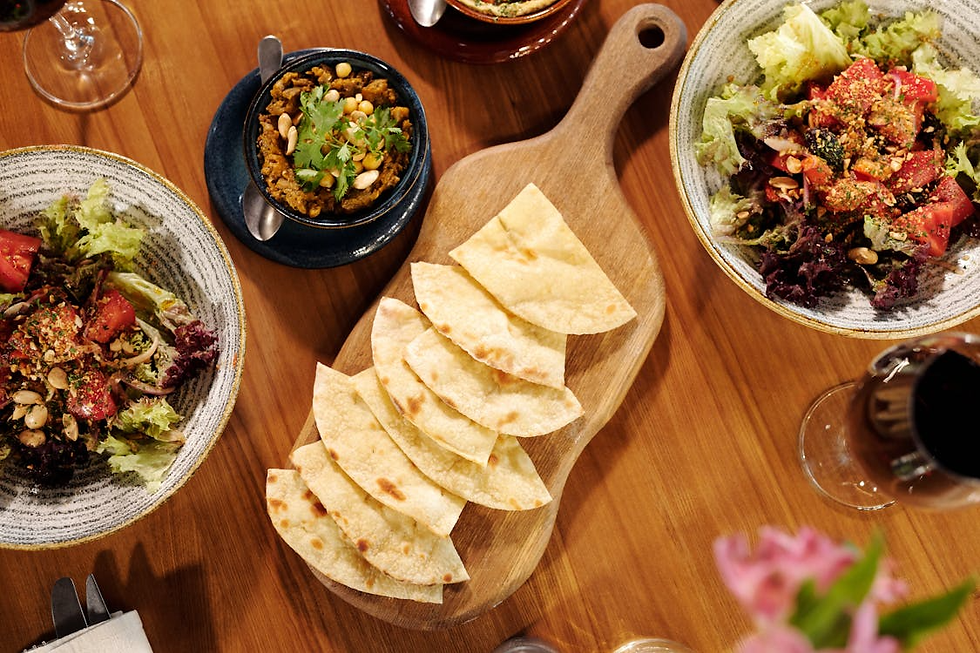Nutritious Dining in Assisted Living: What Troy Residents Should Expect
- stratfordhousellc9
- Sep 13
- 4 min read

Maintaining a balanced and enjoyable diet is essential for overall health, especially for older adults. In assisted living communities, dining services are more than just providing meals; they are an important part of resident well-being, social interaction, and quality of life. For families considering assisted living dining in Troy MI, understanding what to expect from meal options, nutrition standards, and personalized care is vital.
This article explores how assisted living facilities in Troy, Michigan, approach dining from farm-to-table ingredients and meal variationto accommodating special diets and resident preferences.
Why Dining Matters in Assisted Living
Dining in assisted living plays a role far beyond nutrition. It influences physical health, emotional well-being, and even social connections.
Nutrition and Health: Balanced meals help manage chronic conditions such as diabetes, heart disease, and high blood pressure.
Social Engagement: Shared dining experiences create opportunities for residents to connect with others, reducing loneliness.
Quality of Life: Mealtime offers routine, comfort, and a sense of independence.
Assisted Living Dining in Troy MI: Core Features
Residents and families in Troy expect dining programs that balance professional nutrition planning with the enjoyment of food. Here are key features often prioritized in Troy’s assisted living facilities:
1. Farm-to-Table Freshness
Many communities emphasize farm-to-table dining, sourcing local produce and ingredients whenever possible. This ensures:
Fresher and more flavorful meals
Support for local farmers
Seasonal menu changes for variety
2. Meal Variation
Dining services focus on meal variation to avoid repetitive menus. Residents can typically expect:
Rotating weekly and monthly menus
Theme-based meals (such as holiday dinners or cultural cuisine nights)
Seasonal dishes reflecting Michigan’s harvest cycles
3. Special Diets
Residents with dietary needs are accommodated with carefully planned special diets. Examples include:
Low-sodium or heart-healthy options
Diabetic-friendly meals
Gluten-free or vegetarian alternatives
4. Resident Preferences
Beyond medical needs, staff often consider resident preferences to make meals enjoyable. This may involve:
Conducting surveys to understand favorite meals
Allowing flexibility in portion sizes
Offering “always available” menu options for picky eaters
A Look Inside the Dining Experience
Dining in assisted living isn’t just about food it’s about creating a pleasant experience that encourages nutrition and socialization.
Dining Room Environment
Comfortable seating arrangements
Accessible layouts for residents with mobility needs
Warm, welcoming atmosphere designed to feel like home
Mealtime Flexibility
Instead of rigid schedules, many communities in Troy allow:
Multiple dining times to suit resident routines
Grab-and-go options for those with busy activity schedules
In-room dining for residents who prefer privacy
Staff Support
Assistance for residents who need help cutting food or eating
Nutritionists and dietitians to ensure balanced meals
Trained staff who monitor and adapt to changing needs
Table: Key Elements of Assisted Living Dining in Troy MI
Nutrition Standards in Assisted Living
Facilities in Troy adhere to nutritional guidelines recommended for older adults. These often include:
Protein-rich foods to support muscle health
Calcium and vitamin D for bone strength
Fiber-rich meals to aid digestion
Hydration strategies to prevent dehydration
Dietitians typically review menus to ensure residents receive the right balance of nutrients without compromising taste.
The Role of Personalization in Dining
Personalization is at the heart of assisted living dining. Each resident comes with unique medical needs, food preferences, and cultural backgrounds. Facilities often adapt menus in the following ways:
Cultural Foods: Incorporating dishes familiar to residents’ cultural traditions
Favorite Comfort Foods: Including resident-requested meals regularly
Adaptive Meal Plans: Adjusting textures for residents with swallowing difficulties (e.g., pureed or soft diets)
How Assisted Living Dining Supports Social Well-Being
Mealtimes in assisted living also serve as an opportunity to foster community. In Troy, many facilities organize:
Group meals to build friendships
Special events such as holiday banquets
Cooking clubs or demonstrations where residents can participate in food preparation
This sense of community can reduce isolation and contribute to emotional wellness.
Choosing the Right Assisted Living Dining Program in Troy MI
When families evaluate assisted living facilities, dining should be a key consideration. Here are questions to ask during a visit:
Are menus created by a certified dietitian?
How often are menu options rotated?
Can the community accommodate special diets?
Are meals flexible and available outside set times?
What measures are taken to ensure food safety and quality?
How are resident preferences collected and incorporated?
By asking these questions, families can better understand whether a community’s dining program aligns with their loved one’s needs.
Connecting Dining to Overall Care
Dining in assisted living is part of a broader support system. Communities like Stratford House in Troy focus on integrating nutritious meals with overall care, ensuring that dietary needs, social opportunities, and health management work hand in hand.
Conclusion
Dining in assisted living facilities in Troy MI goes beyond nutrition. It represents a balance of health, personalization, and community. With features like farm-to-table freshness, meal variation, and accommodations for special diets and resident preferences, dining services are designed to enhance quality of life. Families should evaluate how dining programs integrate nutrition, choice, and social engagement when selecting the right community for their loved ones.
For more information about assisted living services in Troy, visit Stratford House.
FAQs
Do assisted living communities in Troy MI provide farm-to-table meals?
Yes, many facilities partner with local farms and suppliers to ensure fresh, seasonal, and nutrient-rich dining options.
How are special diets managed in assisted living?
Menus are reviewed by dietitians, and meals are prepared according to medical needs such as low-sodium, gluten-free, or diabetic-friendly diets.
Can residents choose what they want to eat?
Most facilities offer multiple meal options, surveys to gather resident preferences, and “always available” menus to promote choice and satisfaction.
What if a resident needs help during meals?
Trained staff provide assistance, ensuring residents eat safely and maintain dignity during meals.
How does dining support social interaction?
Shared meals, themed dining events, and special celebrations encourage residents to connect with others, supporting emotional well-being.




Comments